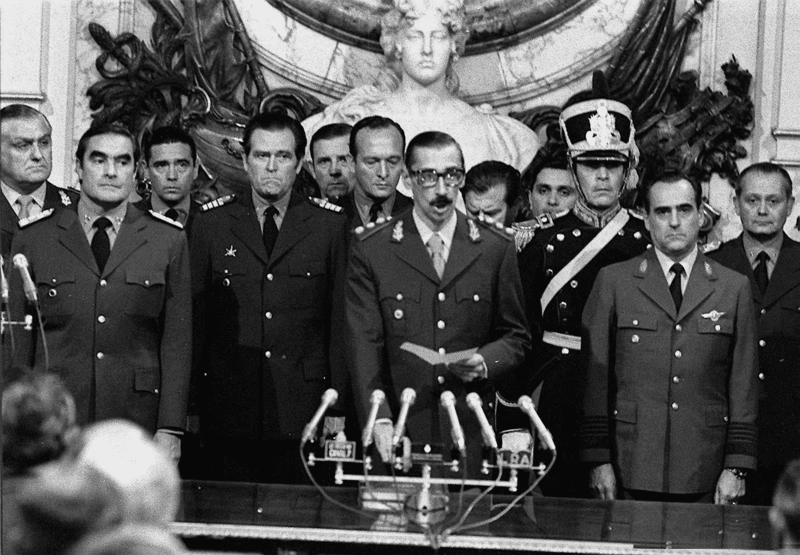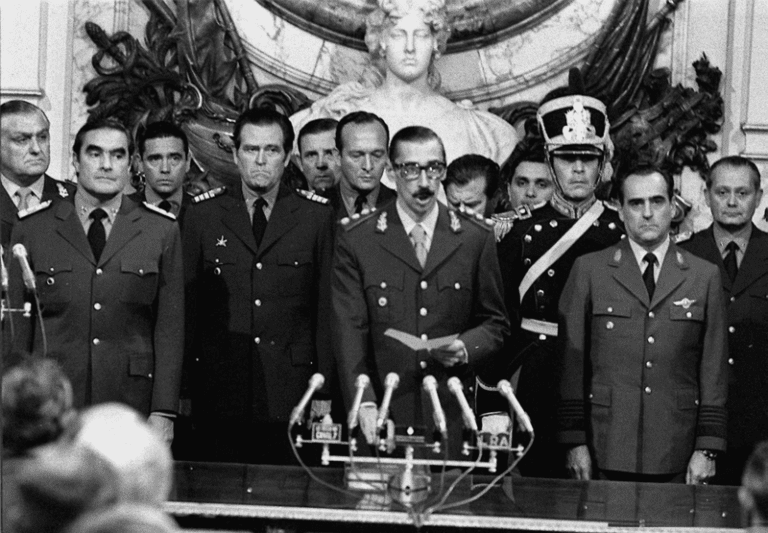
The 1976 Argentine coup d'état, which ousted President Isabel Perón on March 24th, 1976, had elements of right-wing influence but did not strictly adhere to a specific ideology. While it emphasized the restoration of order and security, it was not a traditional right-wing coup. Following the coup, a military junta was established, led by Lieutenant General Jorge Rafael Videla, Admiral Emilio Eduardo Massera, and Brigadier-General Orlando Ramón Agosti. The junta's political process was officially named the "National Reorganization Process," and although its original members changed, it remained in power until the restoration of democratic governance on December 10th, 1983.
The coup had been planned since October 1975, and the Peron government became aware of the preparations two months before its execution. Henry Kissinger, a U.S. official, held multiple meetings with Argentine Armed Forces leaders after the coup, urging them to swiftly eliminate their opponents before concerns about human rights abuses grew in the United States.
Due to the systematic persecution of a social minority during this period, the events have been classified as a genocidal process. This classification has been established through the trials of those responsible for crimes against humanity.


Comments 0